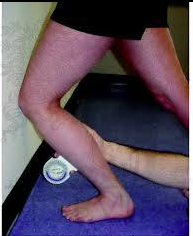Abs on the UP, Glutes on the DOWN
I had the opportunity to go on my 1st mountain bike ride of the season last Sunday morning. Yes, I am aware it is JUNE, but the snow has finally melted (we had over 7 FEET at arapahoe Basin in May) and you need to understand that I am usually a runner). In the cool morning 44 degree air I was reminded of the importance of my gluteal muscles (rather than just my quads) while climbing a technical hill which was clearly pushing my aerobic capacity. We have the opportunity to perform many bike fits in the office and treat many cycling ailments. We also train and retraing pedal stroke and one of our mantras (in addition to skill, endurance and strength) is “Glutes on the downstroke; Abs on the upstroke”. Meaning use your glutes to extend the hip from 12 to 6 o’clock and use your abs to initiate the upstroke. Quadricep (on the downtstroke) and hamstring dominance (on the upstroke) is something we see often and this mantra often proves useful in the “retraining process”.
I have been a fan of Ed Burkes work (“Serious Cycling” and “Competitive Cycling”) for years and have read (and lectured about) these books many times. In my effort to find a basis in the literature for my mantra, I ran across a paper (1) that seemed to substantiate, at least in part, the mantra. It is a small study looked at elite athletes that explores changes that occur in muscle recruitment as the body fatigues after a sub maximal exercise session.
Their conclusion “The large increases in activity for gluteus maximus and biceps femoris, which are in accordance with the increase in force production during the propulsive phase, could be considered as instinctive coordination strategies that compensate for potential fatigue and loss of force of the knee extensors (i.e., vastus lateralis and vastus medialis) by a higher moment of the hip extensors.”
This makes sense, although may be contradicted by this study (2), which showed LESS gluteal activity at higher mechanical efficiency, with increased tricep surae activity. They conclude “These findings imply that cycling at 55%-60% V˙O(2max) will maximize the rider’s exposure to high efficient muscle coordination and kinematics.” Although this study looks at mechanical efficiency and the 1st lloks at muscle activity.
Being seated on a bike and having your torso, as well as hips flexed is not the most mechanically efficient posture for driving the glutes, but clinical observation seems to dictate that the less quad and hamstring dominant people are on the down and up stroke respectively, then the more pain free they are. This does not always equte to being the fastest, but it does equate to fewer injuries showing up in the office.
- Dorel S1, Drouet JM, Couturier A, Champoux Y, Hug F. Changes of pedaling technique and muscle coordination during an exhaustive exercise. Med Sci Sports Exerc. 2009 Jun;41(6):1277-86. doi: 10.1249/MSS.0b013e31819825f8.
- Blake OM1, Champoux Y, Wakeling JM. Muscle coordination patterns for efficient cycling. Med Sci Sports Exerc. 2012 May;44(5):926-38. doi: 10.1249/MSS.0b013e3182404d4b.





















